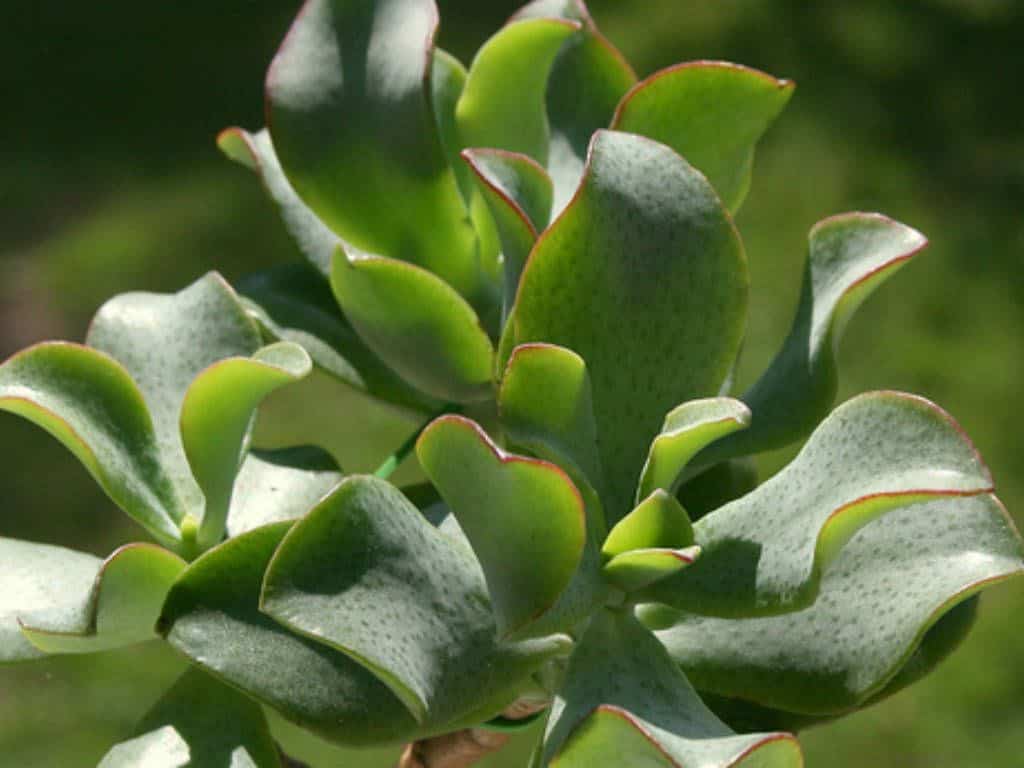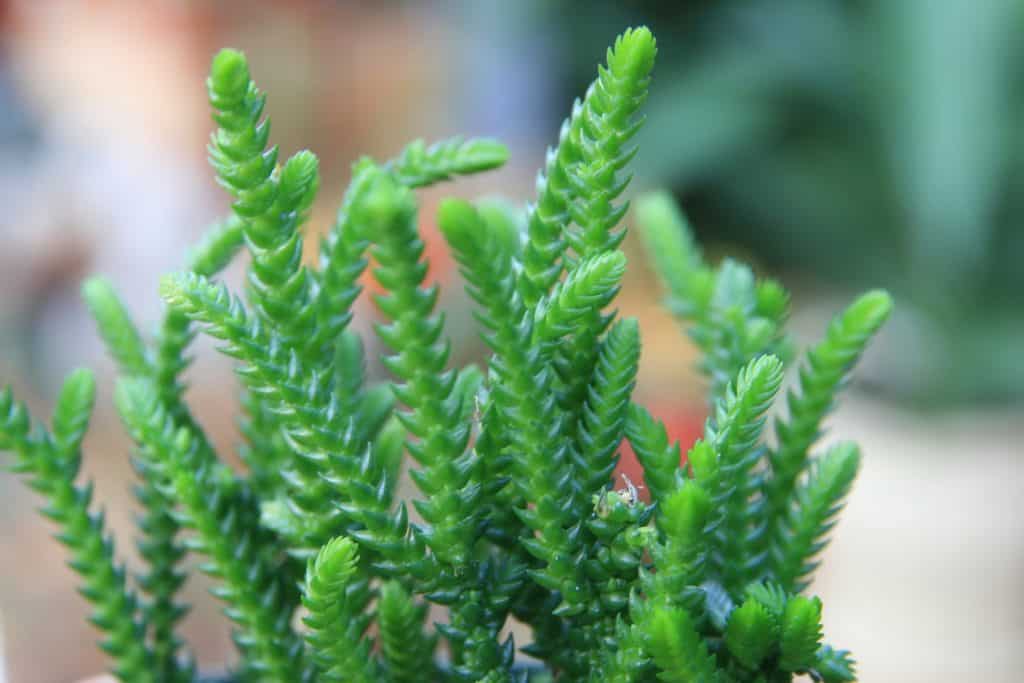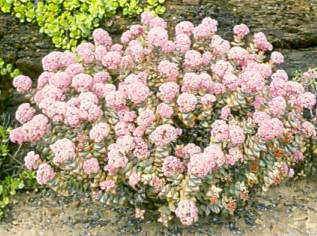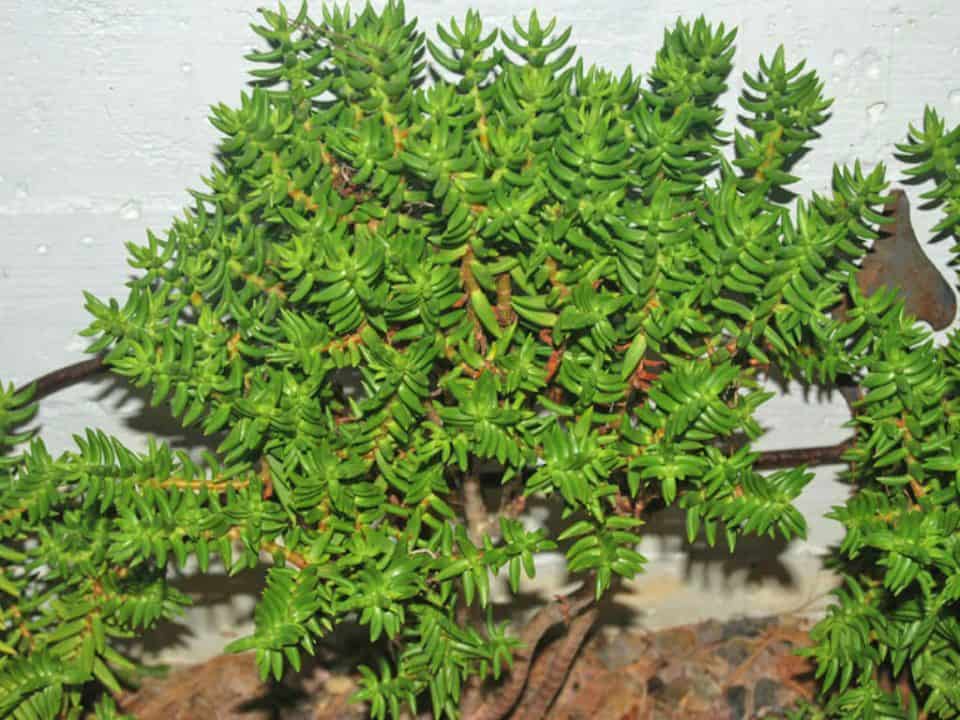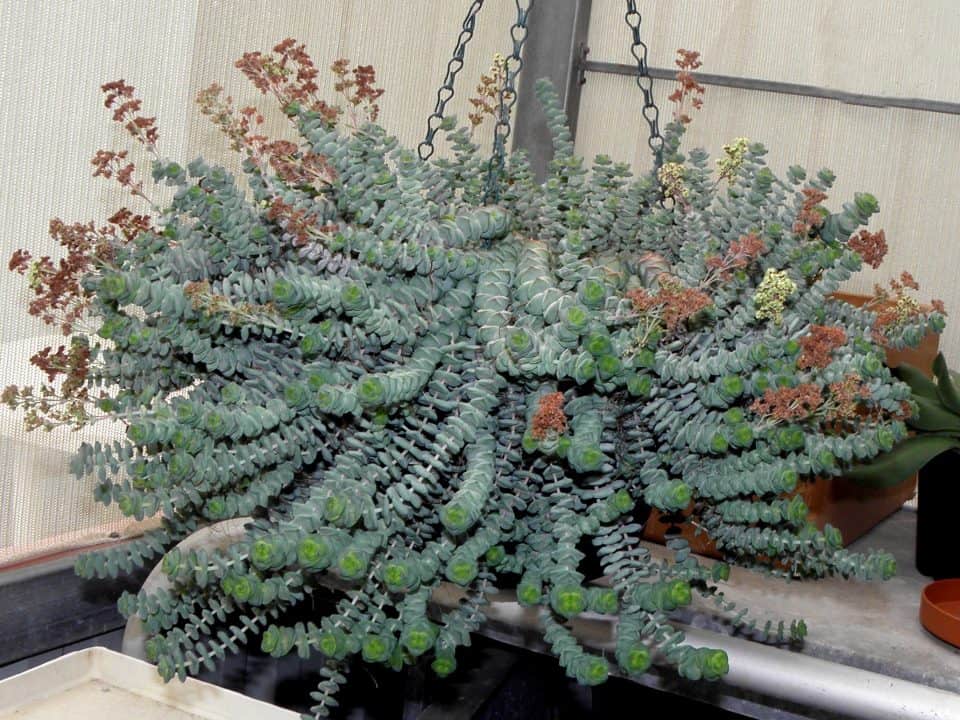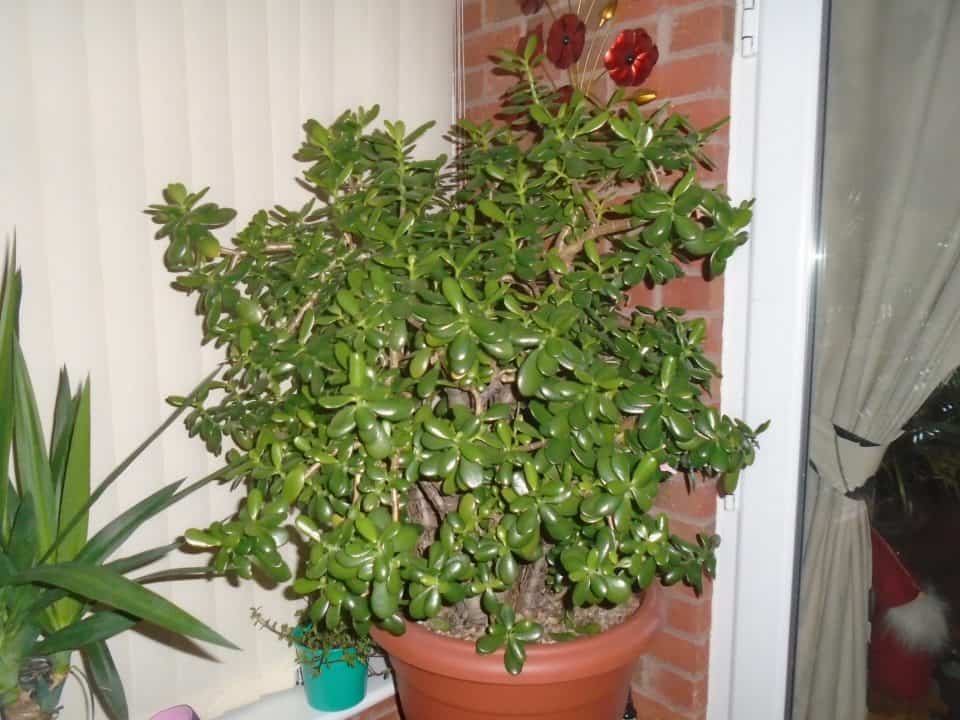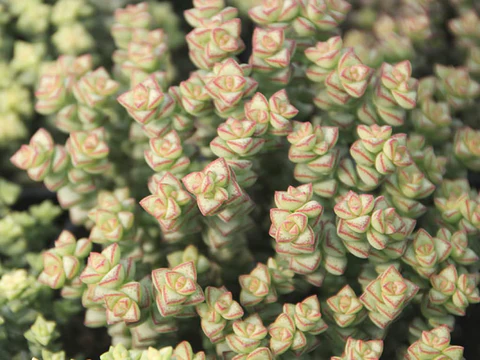Crassula arborescens undulatifolia, also known as Ripple Jade, is a succulent shrub that originates from South Africa, where it grows mainly in rocky areas and mountainsides.
When the plant flowers, it puts on one of the most beautiful displays in the plant world, with its wide range of colors and delicate flower petals. The name arborescens means tree-like, referring to its compact but sturdy growth habit and tall trunk-like stems.
This plant was named by Carolus Linnaeus in 1753, and its common name comes from the ripple pattern of its leaves when they are viewed from above.
With its bright green leaves, this plant can make an excellent addition to an indoor terrarium, but it also flourishes in outdoor gardens in warmer climates such as California or Florida. This plant has been described as extremely easy to grow and care for, and therefore perfect for a mini succulent garden.
Origin and distribution
Crassula arborescens undulatifolia is a small, evergreen succulent native to South Africa. It has a woody stem and grows up to 3 feet tall. The leaves are dark green with red edges and have a rippled or wavy appearance. The flowers are white and bloom in the summer.
Crassula arborescens undulatifolia is easy to grow and drought tolerant. It does not require much care but does need light shade. If too much water is given it will rot and die so it needs to be watered sparingly every three weeks.
The leaves of this plant are dark green with red edges and they have a wavy appearance which gives them their name of Ripple Jade. They are also called pineapples because of their thick, fleshy leaves. The flowers on this plant come out as bright white blooms during the summertime and they like well-drained soil when grown indoors.
However, they do best when grown outdoors because they are drought-tolerant plants that do not require much care. They enjoy being planted near other succulents where there is little to no sun exposure because they prefer filtered light.
Crassula arborescens undulatifolia propagation
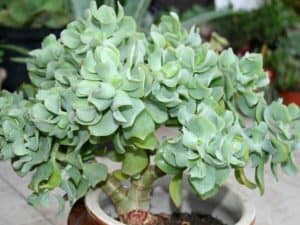
Crassula arborescens undulatifolia, or Ripple Jade, is a beautiful succulent that’s easy to propagate. To propagate, simply take a cutting from a healthy plant and allow the cutting to callous over for a few days. Once the cutting has been calloused, you can plant it in a well-draining cactus or succulent potting mix.
Water your new plant lightly and wait for it to establish itself before watering more heavily. Keep an eye on its soil moisture levels as this succulent needs less water than other types of plants.
Avoid planting this houseplant too close to a window as it will need protection from the sun which may burn its leaves. You’ll know when your houseplant needs water when its leaves start drooping slightly.
Crassula arborescens undulatifolia care
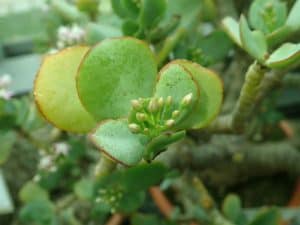
Crassula arborescens undulatifolia, or Ripple Jade, is a beautiful succulent that is easy to care for. It can be grown in a pot or in the ground and prefers full sun to partial shade. Water when the soil is dry, and fertilize monthly during the growing season. Propagate by taking stem cuttings in spring or summer.
Light requirement
Crassula arborescens undulatifolia prefers bright, indirect light but can tolerate some direct sun. If the leaves start to turn red, that means it’s getting too much sun and you should move it to a shadier spot. Conversely, if the leaves start to look pale, that means it’s not getting enough light and you should move it to a brighter spot.
Soil/potting mix
A well-draining potting mix is essential for crassula arborescens undulatifolia (Ripple Jade). I like to use a mix of two parts potting soil to one-part perlite. You could also use a cactus mix. Be sure to water your plant only when the soil is dry to the touch. Allow the excess water to drain away and never leave your plant sitting in water.
Watering
These plants are drought tolerant, so they don’t need much water. Water them only when the soil is dry to the touch. During the winter, you can cut back on watering even more. Let the plant tell you when it needs water by looking at the leaves. If they start to look wilted, that means it’s time to water. But if they’re still nice and green, then they’re fine! Overwatering will cause these plants to rot.
Fertilizer
Ripple jade is a beautiful, easy-to-grow succulent that makes a great addition to any collection. It’s important to fertilize ripple jade regularly to keep it healthy and happy. I like to use a balanced fertilizer that has a ratio of 10-10-10.
Apply the fertilizer every two weeks during the growing season and every month during the winter. Ripple jade is a very tolerant plant, so you don’t have to worry about over-fertilizing it.
Temperature
The ideal temperature for Crassula arborescens undulatifolia is between 60-75 degrees Fahrenheit. They can tolerate a wide range of temperatures, but prefer to be on the cooler side. If the temperature gets too hot, the leaves will start to turn red. If the temperature gets too cold, the leaves will start to turn brown.
Humidity
Crassula arborescens undulatifolia, or Ripple Jade, is a beautiful succulent that does best in high-humidity environments. If you live in an area with low humidity, you can still grow this plant, but you’ll need to take extra care of it.
The ideal humidity range is 40-50%. Areas with less than 40% humidity should place the pot on top of the pebbles and pour water into the tray below them every two weeks during the growing season. Areas with more than 50% humidity should spray their plants once per week during the growing season and water twice per week during winter.
Pruning
If you want to keep your ripple jade plant looking at its best, you’ll need to do some periodic pruning. Pruning helps to encourage new growth and keeps the plant compact and bushy.
To prune, simply snip off any leggy or overgrown stems. You can also remove any dead or damaged leaves. Once again, take care not to cut anything that looks healthy! Water: Pots of ripple jade should be watered when they are almost dry and then allowed to drain before watering again.
The water should never reach up the trunk of the plant because this can lead to rot. They like dry soil so make sure that they’re not constantly wet but don’t let them dry out completely either!
When to repot
You’ll know it’s time to repot your Crassula arborescens undulatifolia when the roots start to grow out of the drainage holes, or if the plant starts to become top-heavy and unstable. Be sure to use a pot that is only one size larger than the current pot, and use a fresh, well-draining potting mix.
Dormancy/Winter rest
During the winter months, Crassula arborescens undulatifolia (Ripple Jade) will enter a state of dormancy. This is a natural process that allows the plant to conserve energy and protect itself from cold weather. The leaves may fall off and the stems may become woody, but this is normal.
To help your Ripple Jade through its dormancy period, make sure to water it regularly and keep it in a bright, sunny spot. Keep in mind that the plant will not have new growth until spring, so you don’t need to fertilize or repot during these months.
In late February or early March, when you start seeing new growth on your plants again, it’s time to give them more light by moving them into an area with lots of sun exposure and watering them less often.
Crassula arborescens undulatifolia flower & fragrance
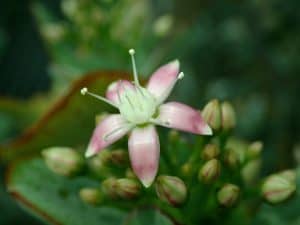
The flowers of Crassula arborescens undulatifolia are small and white, with a delicate fragrance. They appear in clusters at the tips of the stems and bloom from late spring to early summer. The leaves of this plant are its most distinctive feature – they are green and ripple-edged, giving the plant its common name.
Growth rate
Crassula arborescens undulatifolia is a fast-growing succulent that can reach up to two feet in height. It has glossy, dark green leaves that are slightly rippled or wavy. The plant produces small, white flowers in the summer.
Toxicity
Ripple jade is considered toxic to humans and animals if ingested. Symptoms of toxicity include vomiting, diarrhea, and drooling. If you suspect your pet has ingested ripple jade, contact your veterinarian immediately.
USDA hardiness zones
Crassula arborescens undulatifolia thrives best in USDA hardiness zones 10-11. It is a slow-growing succulent that will thrive for years without maintenance. Growing to heights of only 6 inches, this creeper does not need much attention from the gardener and is a great option for gardeners with little time to spend on plant care.
With small delicate green leaves and tiny pink flowers, Crassula arborescens undulatifolia has very few pest problems but may suffer from spider mites if grown outside during hot weather.
Pests and diseases
Ripple jade is a tough little plant that is not often bothered by pests or diseases. However, mealybugs and scale can sometimes be a problem. If you see these pests on your plant, spray them with a mixture of water and dish soap.
For diseases, ripple jade is susceptible to root rot and powdery mildew. These can be prevented by making sure the plant has good drainage and is not overwatered. To treat root rot, cut off the top of the plant and discard it. Spray again with a mixture of water and dish soap every few days.
With powdery mildew, cut off any infected leaves as soon as you notice they are wilting. Then spray again with the solution described above every few days until all symptoms have disappeared.
